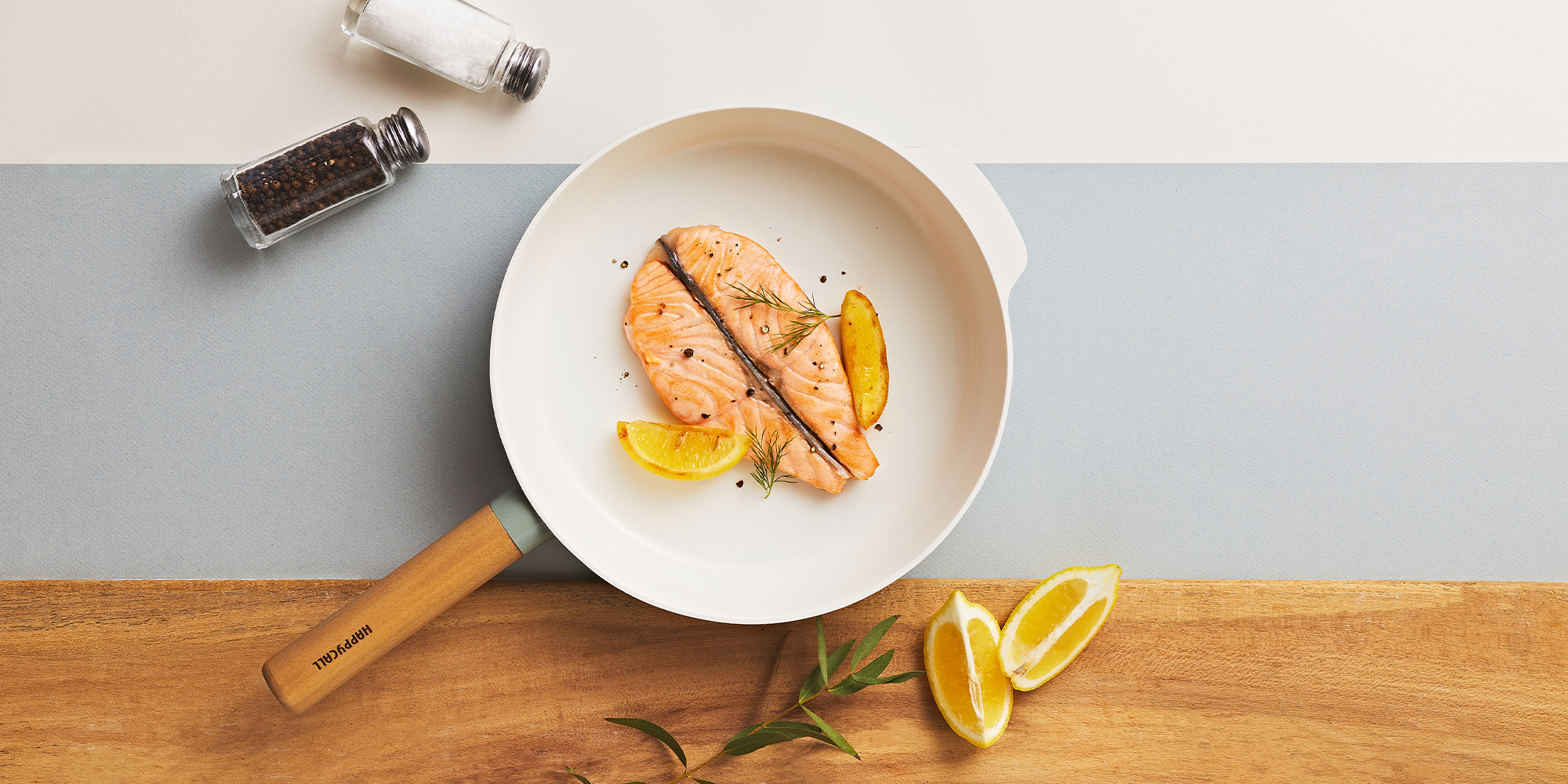
Neoflam Fika Ceramic Nonstick Cookware
Neoflam has a ceramic-based Ecolon™ non-stick coating. Nonstick ceramic coatings are free of PTFE, PFOS, and PFOA and have many advantages. In addition, it is free of lead, cadmium, and other heavy metals.


In recent years, ceramic nonstick cookware has emerged as the go-to choice for health-conscious consumers and eco-friendly enthusiasts. This innovative cookware offers a safer and greener alternative to traditional PTFE-based nonstick options, adding a touch of flair to your kitchen.
In this blog post, we will explore the pros, cons, and differences between ceramic nonstick cookware and PTFE-based nonstick products, helping you make an informed choice.
Ceramic nonstick cookware is crafted by applying a ceramic coating to a metal base, typically aluminium. HC Happycall takes it a step further, adding a stainless steel layer on top of the aluminium in many of their products for an added layer of safety.
Not only is the ceramic coating a modern technology, but it is also produced in an eco-friendly manner, minimising pollution. Spot the Happycall Green Project logo and you'll know that Happycall is dedicated to reducing waste and promoting sustainable materials in their products.
Ceramic nonstick cookware is celebrated for being PTFE and PFOA-free. Although most PTFE-based cookware is now PFOA-free, making nonstick cookware significantly safer, many still opt for ceramic options to ensure a healthier cooking experience.
For customers seeking alternatives to nonstick cookware, options like carbon steel, cast iron, and stainless steel are worth considering. However, if you favour the convenience of nonstick cookware and dislike the maintenance involved with metal cookware, ceramic cookware is the perfect solution.
Featuring clear coating layers, ceramic nonstick cookware offers a range of bright colour combinations for both inside and outside, adding a fun touch to your kitchen. On the other hand, PTFE cookware usually comes with a black base and does not provide the same colourful options as ceramic cookware.
No product is without its flaws, and ceramic nonstick cookware is no exception. It is not recommended for use at high temperatures, as extended exposure to intense heat can weaken the ceramic coating, diminishing its nonstick properties and durability. Additionally, ceramic cookware can be prone to chipping or scratching if not treated with care.
When it comes to durability, PTFE-based nonstick cookware has the edge over ceramic nonstick cookware, generally exhibiting greater heat resistance. With proper heat control, PTFE-based nonstick cookware often boasts a longer lifespan than its ceramic counterpart.
Having gained a clearer insight into the differences between ceramic and PTFE-based nonstick cookware, you can now confidently select the perfect cookware that caters to your needs and preferences.
COPYRIGHT WARNING: Content theft of any kind is immediately reported to Google, which results in ranking penalties. Original texts can be verified in internet archives. My Cookware Australia® holds the copyrights for all the content on this site, including articles, product descriptions, and user guides.

Neoflam has a ceramic-based Ecolon™ non-stick coating. Nonstick ceramic coatings are free of PTFE, PFOS, and PFOA and have many advantages. In addition, it is free of lead, cadmium, and other heavy metals.